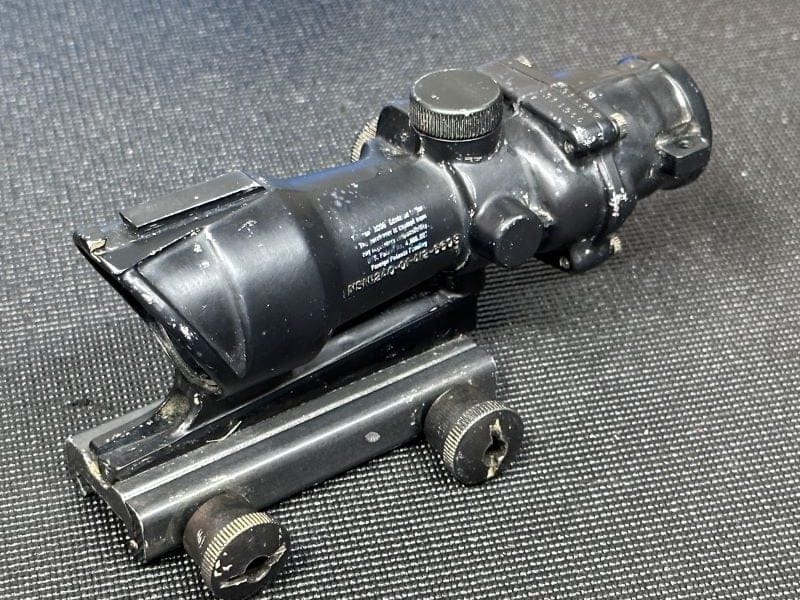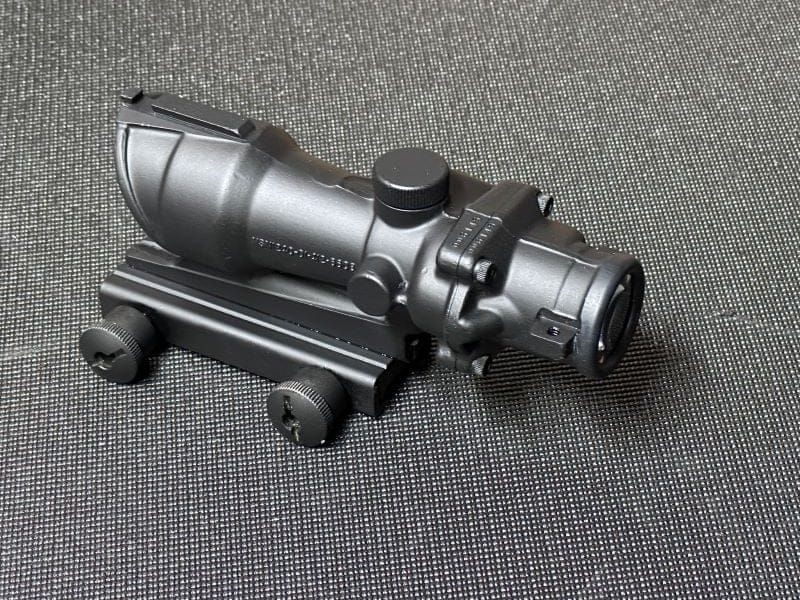In part one of “Spray Painting Guns and Optics” we talked about why someone may want to spray paint a gun. I mentioned in that article that spray paint will come off most areas of a rifle. There is no guarantee the paint will come off every part, but I have never had any issues.
When I spray paint a gun or optic, I do not use a primer or clear coat (in most cases). This is because the gun is meant blend in so I’m not going for a perfect finish. When the spray paint fades or scratches, it just makes it look even better. You can also add more paint any time; it’s cheap.

I have stripped paint off rifles before, but my newest project was a 4X32 ACOG that was spray painted. I wanted it to be flat black, so I stripped it down and then applied a light coat of paint back on it. The result was an almost new-looking optic for my rifle. Today, I will cover the process of stripping the paint off the ACOG, which is the same process as a rifle. Let’s get started.
What is needed to remove spray paint?
- Paint remover (solvent, paint thinner, mineral spirits, etc.)
- Nylon gloves
- Nylon brush
- Plastic scraper
- Scotch Bright pad
- Paper towels
- Work rag
- Cardboard (for a work area)
You don’t need very many tools to strip the paint from a gun, optic, or other accessories. For this ACOG, I used Hoppe’s NO.9 Gun Bore Cleaner. Most gun solvents, paint thinners, mineral spirits, or even brake cleaners will work for removing spray paint. Just be mindful that some cleaners can damage the factory finish of a gun if left for too long.
I would recommend wearing gloves to keep the cleaner and paint mixture off your hands. I used a solvent because I already had a big bottle on my workbench. A nylon brush, plastic pick/scraper, and a piece of Scotch Bright scratch pad will be needed too.
I used a stainless-steel brush and scraper on some areas of the optic. Use extreme caution with a steel brush or scraper, however, as it can scratch the gun or optic. An old rag and some paper towels will help wipe off the paint as you clean. Wherever you plan to clean the gun or gun part, I would lay down cardboard so it can be thrown away. The cleaner and paint mixture will get everywhere so it’s easier to let the cardboard soak it all up and throw it away when you’re done. Use a ventilated area and have plenty of light before you start.
Getting Started
Some types of chemicals used for stripping paint could damage plastic, rubber gaskets, glass, or other parts of a gun, optic, or light. Tape off any area that does not have paint needing to be stripped. I taped off the glass on the ACOG with painter’s tape. I also made sure the caps for the battery, windage, and elevation adjustments were snug.
If you are stripping paint from a rifle, you don’t have to take it apart, but it may be easier. It has been a while since I stripped the paint off my last rifle, but I took it completely apart. This allowed me to work on the upper and lower receivers separately. Any small parts that were hard to clean, I replaced.

Apply the cleaner. Brush, wipe, and repeat.
Once you are certain the cleaner will remove the paint and not damage the gun or optic, you can work in larger areas. For my ACOG, I started on one side and applied the solvent to the entire side of the optic so it could soak.
With the brush, I worked one small area at a time. Once the solvent started looking the same color as the paint, I wiped it off and dipped my brush in the solvent before scrubbing again. I found this process worked best for me. The solvent only wanted to take off one layer of paint at a time. I repeated the cleaning process twice in one area before seeing the factory finish. Once I made it to the factory finish, I moved over a little and continued with the same process.

Finishing Up
Once I had all the spray paint off the ACOG, I used Slip 2000 to clean the solvent from the optic. The tape was easy to get off and the ACOG was paint-free. This ACOG, however, looked like it had been used in every war since it was manufactured. The finish on ACOGs is great, but they still get dinged and beat up a little.
I decided to try to repaint the optic with flat black machine paint. I retaped the glass and gave it one light coat to cover up all the little scratches. Once that dried, I gave it two coats of Clear Coat and dried it with a heat gun. I removed the tape again and cleaned the glass with some eyeglass cleaner. The finished result is an optic that almost looks like new. I have used it on several different guns now and it doesn’t have one scratch on it.



